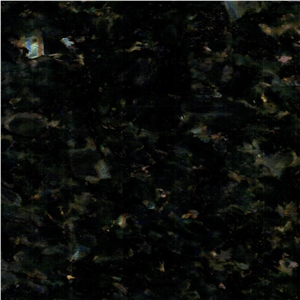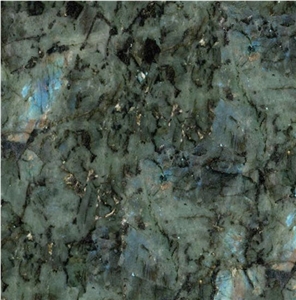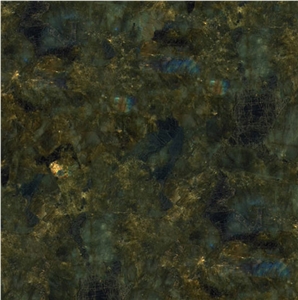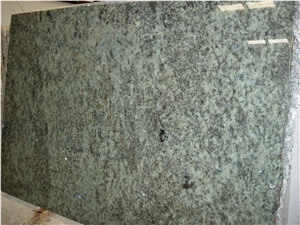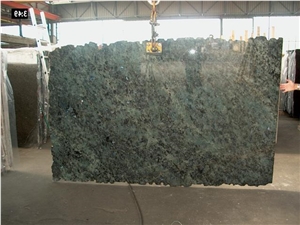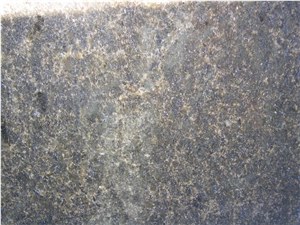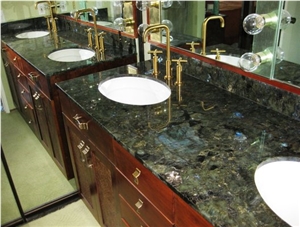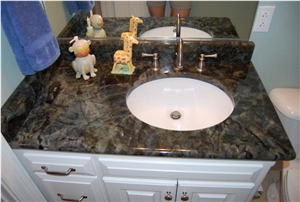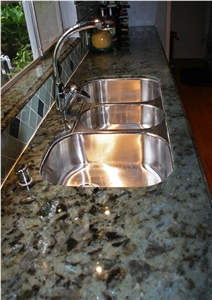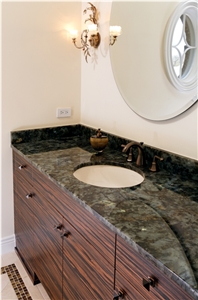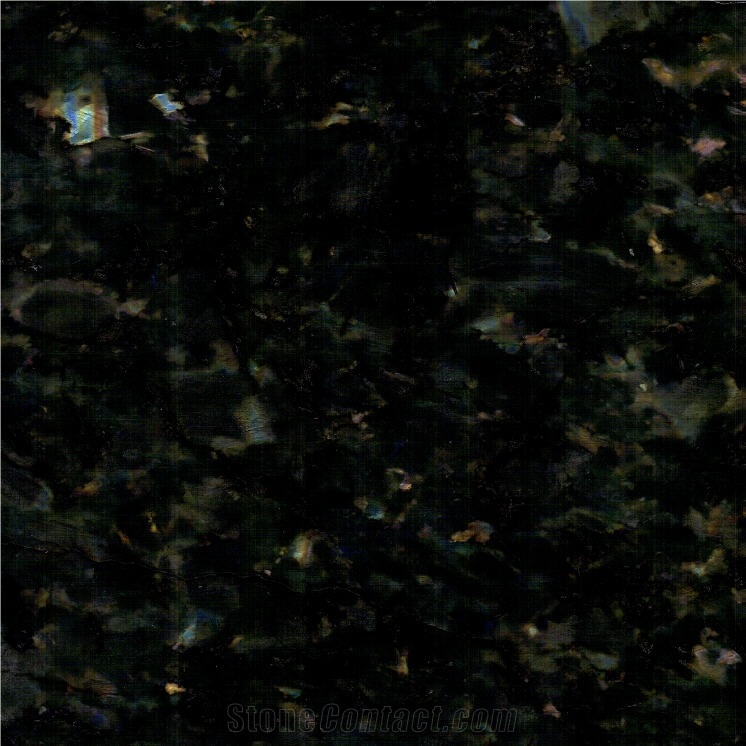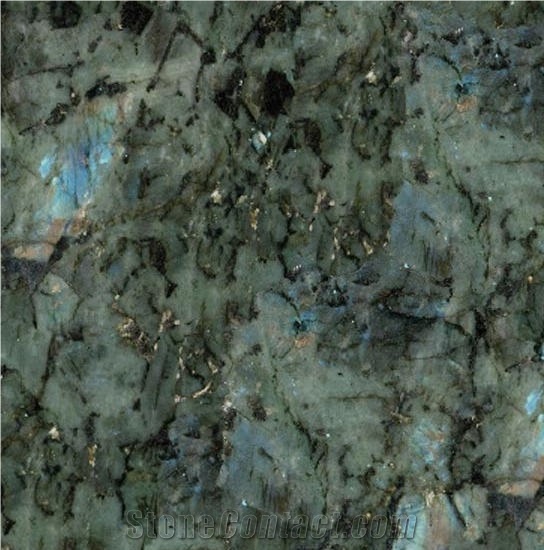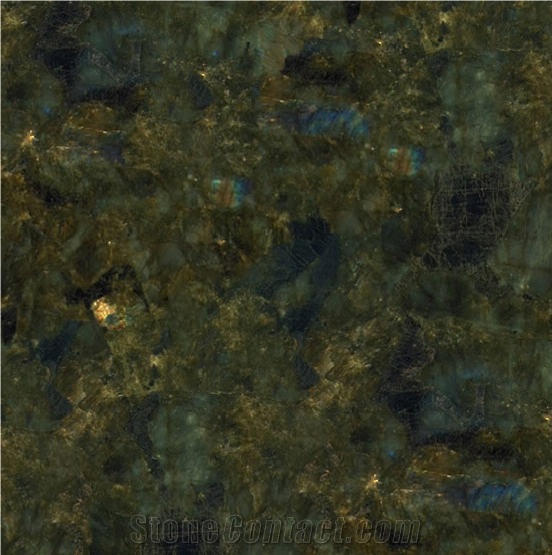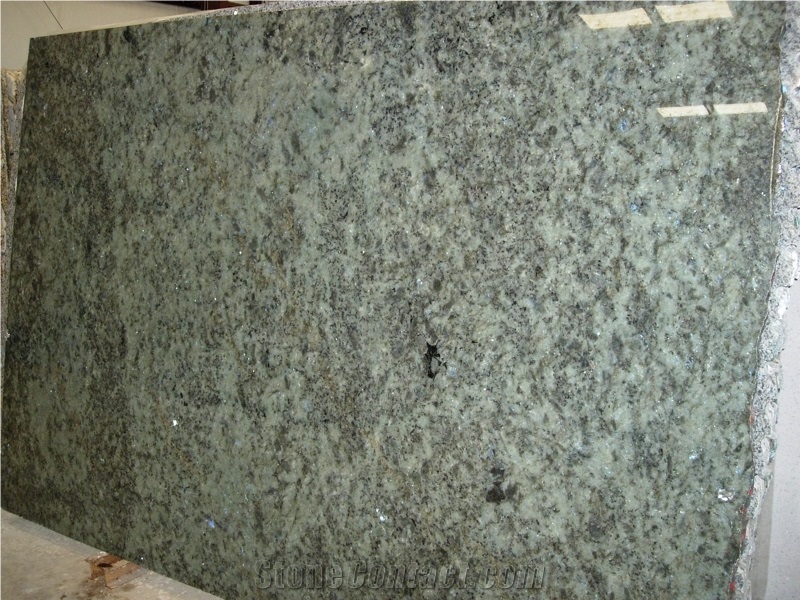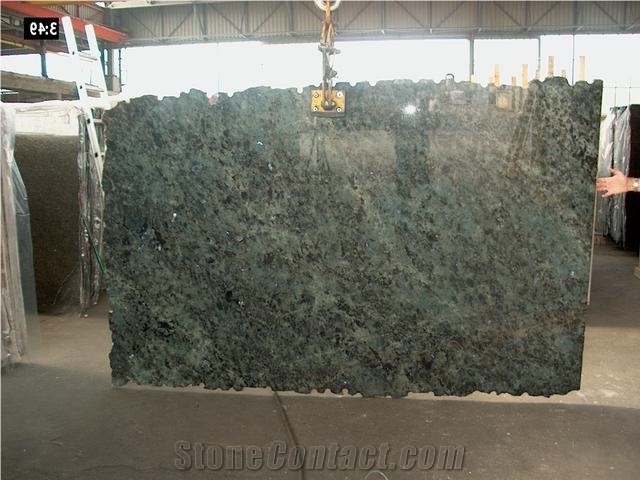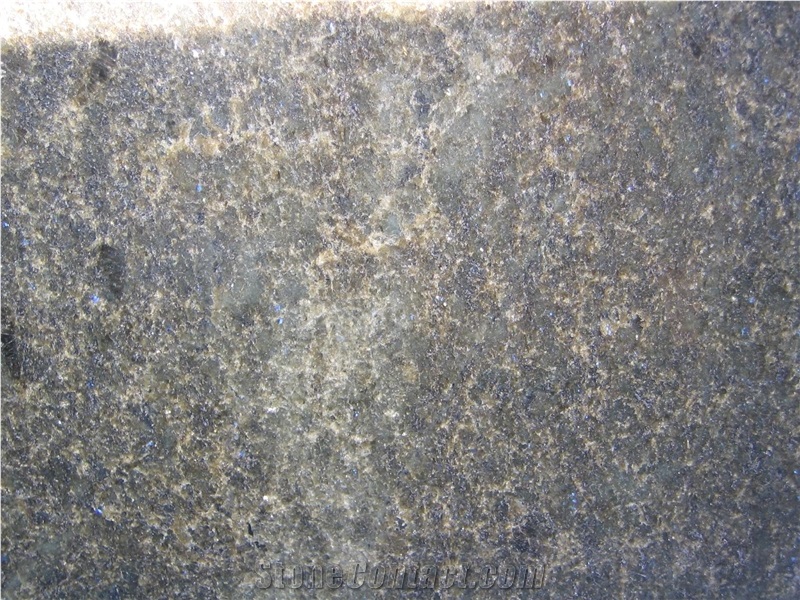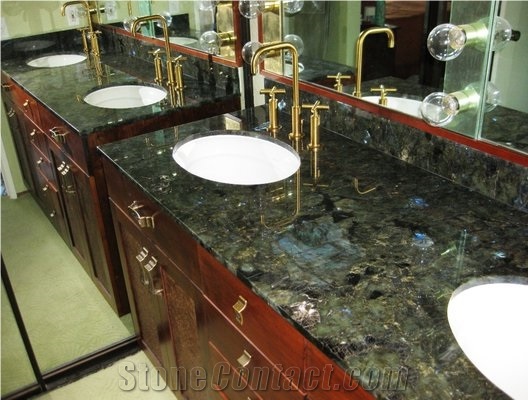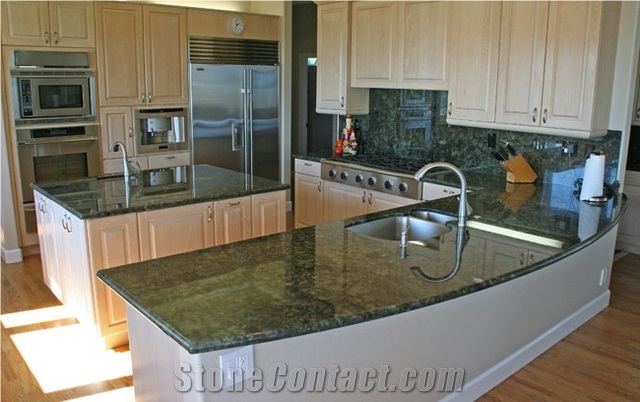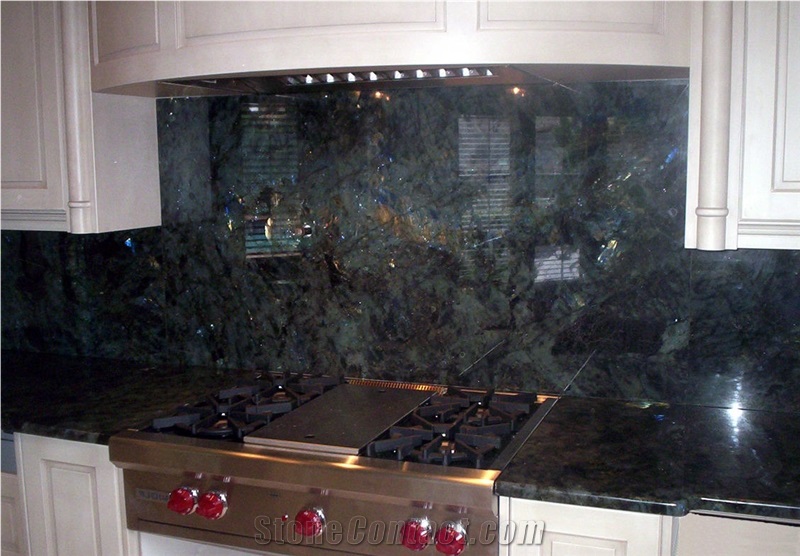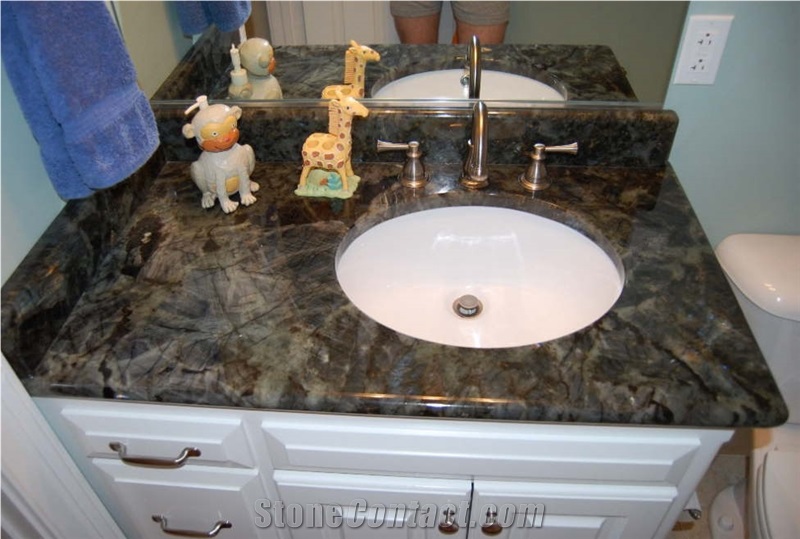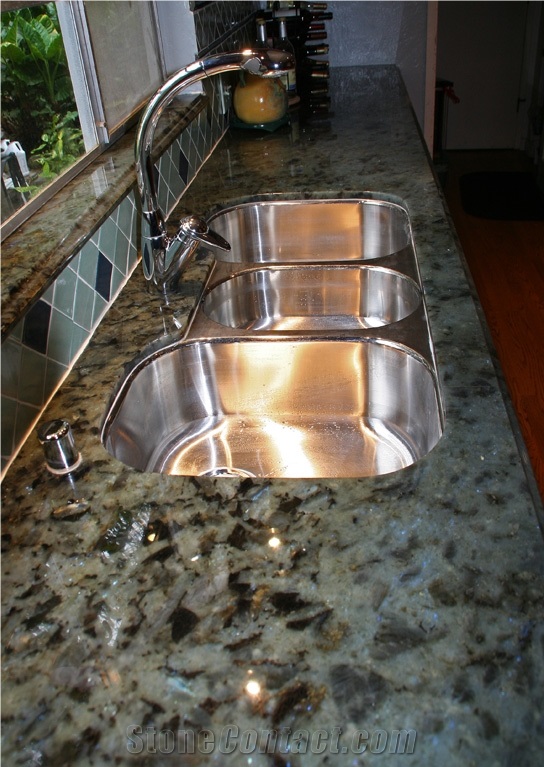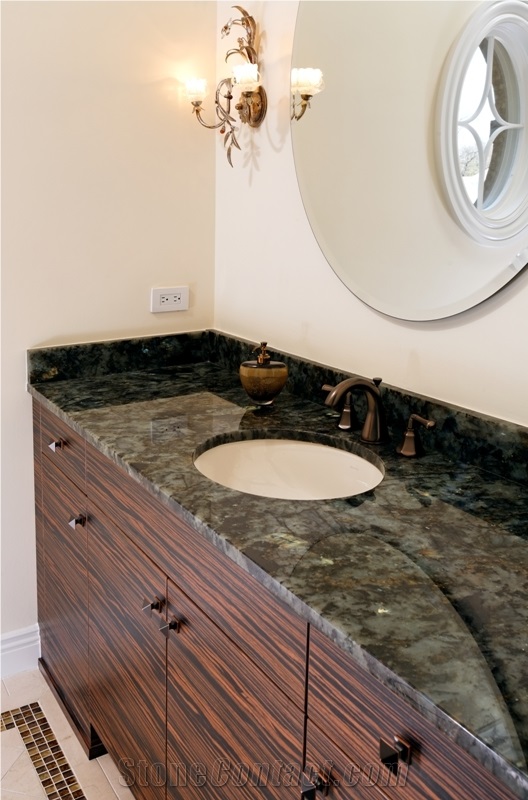Labradorite Green Granite
 Madagascar
(Ihosy, Ihorombe Region, central south Madagascar)
Madagascar
(Ihosy, Ihorombe Region, central south Madagascar)
Labradorite Green Granite is a striking and exclusive natural stone known for its exceptional beauty and unique features. Quarried in Ihosy, located in the Ihorombe Region of central south Madagascar, this granite variety boasts an exquisite green hue with captivating details that set it apart.
The primary characteristic of Labradorite Green Granite is its beautiful green color. This green shade ranges from deep, rich tones to more subtle and vibrant hues, giving the stone a sense of depth and complexity. The green coloration can evoke feelings of nature and serenity, making it a favored choice for creating calming and inviting spaces.
What truly distinguishes Labradorite Green Granite are the intricate details found within the stone. The granite features clusters of black mica, creating distinct dark spots that add a sense of depth and visual interest to the surface. These black mica clusters contrast with the green background, adding a touch of drama and enhancing the stone's overall character.
Another remarkable feature of Labradorite Green Granite is the presence of large blue patches. These blue areas are often iridescent and reminiscent of the Labradorite mineral, which is known for its play of colors when viewed from different angles. The blue patches within the green granite add a pop of color and create an almost ethereal and captivating effect.
Labradorite Green Granite's beauty and exclusivity make it a highly sought-after material for a range of architectural and design applications. It is commonly used for countertops, flooring, wall cladding, and decorative accents. The granite's ability to infuse spaces with a sense of luxury and uniqueness has made it a favored choice among those seeking to create memorable interiors.
In summary, Labradorite Green Granite's beautiful green color, unique details such as black mica clusters and large blue patches, and its exclusive origin in Madagascar contribute to its exceptional appeal. Its ability to create visually stunning and captivating surfaces makes it a favored choice for those looking to make a bold and sophisticated statement in their design projects.

What grade is Madagascar's Labradorite Green Granite?

What is the physical properties of Labradorite Green Granite?

Can Madagascar's Labradorite Green Granite be used exterior applications in very rainy climates?

What is the coefficient of friction of Leathered Madagascar's Labradorite Green Granite tiles?

Can Madagascar's Labradorite Green Granite be used in a office?

Can Madagascar's Labradorite Green Granite be used outdoors?

What is the difference between granite and labradorite?

Can Madagascar's Labradorite Green Granite be used in wall coverings?

Is Madagascar's Labradorite Green Granite an expensive stone?

What is labradorite granite?

Are there color variations of Madagascar's Labradorite Green Granite?

Why is blue granite so expensive?

What should you not use for cleaning Labradorite Green Granite countertops?
-

Xiamen SSD Technology co., ltd
 China
China
 1YRDiamond members are premium members on platform, providing members with comprehensive approach to promoting their products, increasing products exposure and investment return to maximize.
1YRDiamond members are premium members on platform, providing members with comprehensive approach to promoting their products, increasing products exposure and investment return to maximize.
 Verified Supplier is for prove company authenticity,including business license,trade license and effective office space,to enhance buyers' trust to suppliers and their products, reducing communication costs.
Verified Supplier is for prove company authenticity,including business license,trade license and effective office space,to enhance buyers' trust to suppliers and their products, reducing communication costs.
Contact Supplier
-

FOSHAN MONO BUILDING MATERIAL CO.,LTD.( MOREROOM STONE )
 China
China
 10YRDiamond members are premium members on platform, providing members with comprehensive approach to promoting their products, increasing products exposure and investment return to maximize.
10YRDiamond members are premium members on platform, providing members with comprehensive approach to promoting their products, increasing products exposure and investment return to maximize.
 Verified Supplier is for prove company authenticity,including business license,trade license and effective office space,to enhance buyers' trust to suppliers and their products, reducing communication costs.
Verified Supplier is for prove company authenticity,including business license,trade license and effective office space,to enhance buyers' trust to suppliers and their products, reducing communication costs.
Contact Supplier
-

 India
India
 Verified Supplier is for prove company authenticity,including business license,trade license and effective office space,to enhance buyers' trust to suppliers and their products, reducing communication costs.
Verified Supplier is for prove company authenticity,including business license,trade license and effective office space,to enhance buyers' trust to suppliers and their products, reducing communication costs.
Contact Supplier
-

XIAMEN SINGO IMPORT & EXPORT TRADING CO., LTD.
 China
China
 16YRDiamond members are premium members on platform, providing members with comprehensive approach to promoting their products, increasing products exposure and investment return to maximize.
16YRDiamond members are premium members on platform, providing members with comprehensive approach to promoting their products, increasing products exposure and investment return to maximize.
 Verified Supplier is for prove company authenticity,including business license,trade license and effective office space,to enhance buyers' trust to suppliers and their products, reducing communication costs.
Verified Supplier is for prove company authenticity,including business license,trade license and effective office space,to enhance buyers' trust to suppliers and their products, reducing communication costs.
Contact Supplier
-

 France
France
Contact Supplier
-

Xiamen Yinxiang Artificial Marble Co., Ltd.
 China
China
 5YRDiamond members are premium members on platform, providing members with comprehensive approach to promoting their products, increasing products exposure and investment return to maximize.
5YRDiamond members are premium members on platform, providing members with comprehensive approach to promoting their products, increasing products exposure and investment return to maximize.
 Verified Supplier is for prove company authenticity,including business license,trade license and effective office space,to enhance buyers' trust to suppliers and their products, reducing communication costs.
Verified Supplier is for prove company authenticity,including business license,trade license and effective office space,to enhance buyers' trust to suppliers and their products, reducing communication costs.
Contact Supplier
-

 China
China
 13YRDiamond members are premium members on platform, providing members with comprehensive approach to promoting their products, increasing products exposure and investment return to maximize.
13YRDiamond members are premium members on platform, providing members with comprehensive approach to promoting their products, increasing products exposure and investment return to maximize.
 Verified Supplier is for prove company authenticity,including business license,trade license and effective office space,to enhance buyers' trust to suppliers and their products, reducing communication costs.
Verified Supplier is for prove company authenticity,including business license,trade license and effective office space,to enhance buyers' trust to suppliers and their products, reducing communication costs.
Contact Supplier
-

-

-

 Norway
Norway
Contact Supplier
The request includes: 1. surface finished, size 2. quantity required






